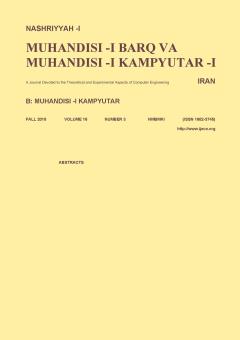-
-
List of Articles
-
Open Access Article
1 - A Distributed Solution for Mixed Big Data Clustering
M. Mahmoudi نگین دانشپور -
Open Access Article
2 - A New Memetic Model based on the Fixed Structure Learning Automata
M. Rezapoor Mirsaleh M. R. Meybodi -
Open Access Article
3 - Identifying Primary User Emulation Attacks in Cognitive Radio Network Based on Bayesian Nonparametric Bayesian
K. Akbari J. Abouei -
Open Access Article
4 - Introducing a Fog-Based Algorithm for Routing in Wireless Sensor Networks
E. Mirzavand Borujeni D. Rahbari M. Nickray -
Open Access Article
5 - Visual Distractors Detecting in Images Using Weighted Two Phase Test Sample Sparse Representation Method
F. Sabouri F. yaghmaee -
Open Access Article
6 - A Novel Link Prediction Approach on Social Networks
S. Rezavandi Shoaii H. Zare -
Open Access Article
7 - An Improved Grid-Based K-Coverage Technique Using Probabilistic Sensing Model for Wireless Sensor Networks
Abdolreza Vaghefi Mahdi Mollamotalebi -
Open Access Article
8 - Semi-Supervised Metric Learning in Stratified Space by Accurate Exploiting of Prior Knowledge
Z. Karimi S. Shiry Ghidary R. Ramezani
-
The rights to this website are owned by the Raimag Press Management System.
Copyright © 2017-2026







